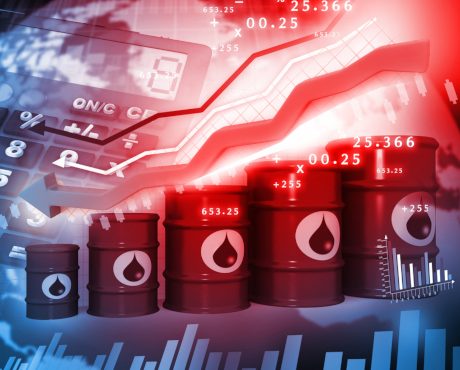A Not-So-Perfect High-Yield Stock
In a market where the average S&P 500 company pays less than two percent, a double-digit dividend yield looks too good to be true. Therefore, it shouldn’t come as a surprise that most ultra-high yielders are not perfect.
Take Green Plains Partners LP (NASDAQ:GPP) stock, for instance. GPP is a master limited partnership (MLP) that owns and operates ethanol and fuel storage tanks, terminals, and transportation assets. Trading at $15.35 apiece, the stock offers investors a jaw-dropping yield of 12.4%.
A look at the partnership’s distribution history would show why it is less than perfect. GPP stock completed its initial public offering in June 2015 and immediately began to increase its payout. From its first payment of $0.40 per unit in November 2015 to $0.475 per unit paid in May 2018, the partnership managed to raise its cash distribution every quarter for 10 consecutive quarters. (Source: “Green Plains Partners LP Dividend Date & History,” Nasdaq, last accessed September 12, 2018.)
That’s quite an impressive dividend growth history, especially when you take into account the fact that this was a period of subdued commodity prices, and that dividend cuts were quite common in the energy industry.
However, in July 2018, the board of directors of Green Plains Partners’ general partner declared a quarterly cash distribution of $0.475 per unit for the August payment—the same as the distribution in May. In other words, GPP stock’s dividend hike streak had come to an end. (Source: “Green Plains Partners Declares Quarterly Distribution,” Green Plains Partners LP, July 19, 2018.)
Green Plains Partners LP: Is the Distribution Safe?
The big question now, of course, is whether the current payout is sustainable. So let’s take a look at the financials.
Because Green Plains Partners is an MLP, the key performance metric to look at is distributable cash flow. The partnership defines it as adjusted earnings before interest, taxes, depreciation and amortization, less interest expense, income taxes, maintenance capital expenditures, and adjustments for equity method investees.
In the second quarter of 2018, Green Plains Partners generated $15.0 million in distributable cash flow. However, it declared total distributions of $15.5 million. That translated to a coverage ratio of 0.97 times, meaning the partnership did not generate quite enough cash to cover the payout. (Source: “Green Plains Partners Reports Second Quarter 2018 Financial Results,” Green Plains Partners LP, August 1, 2018.)
However, things could get better going forward. “We expect our quarterly coverage ratio to improve, as Green Plains Inc. has indicated the plants will increase production in the last half of the year,” said Todd Becker, Green Plains Partners LP’s president and chief executive officer. (Source: Ibid.)
Also, distribution coverage wasn’t always an issue for this Omaha, Nebraska-based energy partnership. GPP actually achieved a solid distribution coverage ratio of 1.1 times in full-year 2017. And on a trailing 12-month basis, the partnership’s distribution coverage ratio stands at 1.03 times. (Source: “Green Plains Partners Reports Fourth Quarter and Full Year 2017 Financial Results,” Green Plains Partners LP, February 7, 2018.)
A Fee-Based Business Model
Now, some of you may have heard of Green Plains Inc (NASDAQ:GPRE), which is one of the largest ethanol producers in the world. And while Green Plains Inc acts as the general partner of Green Plains Partners, GPP operates through an entirely different business model.
You see, Green Plains Partners was created to expand Green Plains Inc’s logistics business. Today, the partnership has 39 storage facilities located at or near Green Plains Inc’s 17 ethanol plants. It also has eight fuel terminal facilities and 3,500 railcar and trucking capabilities. (Source: “BMO Farm to Market Conference,” Green Plains Partners LP, May 16, 2018.)
Thanks to this relationship with its general partner, most of GPP’s business is backed by long-term, fee-based commercial agreements. And with minimum-volume commitments specified on many of its contracts, the partnership can generate predictable cash flows despite the volatility in actual ethanol production.
And don’t forget that since ethanol can be produced from corn and other plant materials, it is considered a renewable fuel. Furthermore, most cars produced since the 1980s can run a blend consisting of gasoline and up to 10% ethanol. With more stringent renewable targets being adopted around the world, the ethanol industry could see some decent growth down the road.
The Bottom Line on Green Plains Partners LP
At the end of the day, breaking a dividend hike streak is not the end of the world. Green Plains Partners LP did not cut the payout; it is simply maintaining the distribution rate, rather than raising it. And if the partnership can keep paying the current amount, GPP stock’s 12.4% yield would look quite attractive.
